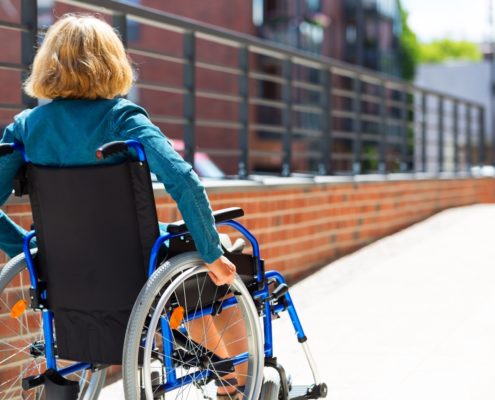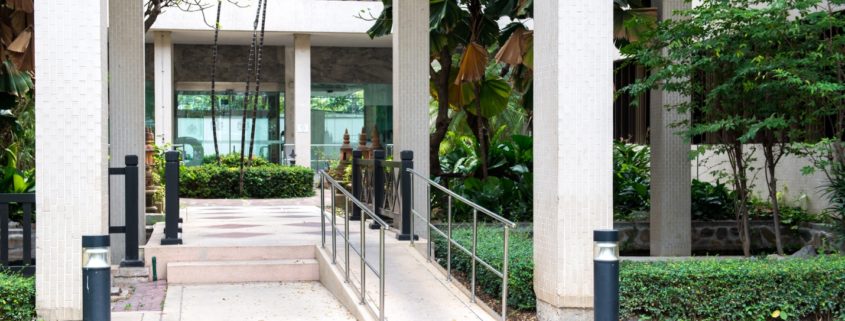Are you familiar with the Americans with Disabilities Act (ADA)? Did you know that the ADA holds specific guidelines for walkways, sidewalks, and walking areas that American businesses must adhere to? These ADA guidelines specify exactly how walkways must be installed and how you must make them safe, including specific measurements, so they are traversable by patrons and employees with disabilities.
In this post, we’ll explore Curb Ramps and Pedestrian Crossings Under Title II of the ADA. By following these guidelines for ADA walkways, you can help make our cities and towns safer, one walkway at a time.
Sidewalks
The ADA’s guidelines for sidewalks also apply to businesses that are responsible for the care and ownership of sidewalks or walkways alongside roads. They specify that the sidewalk cross-slope (the angle or slope from side to side, rather than along the walkway) must be no more than two percent. Both walkways and sidewalks must have a minimum clear width of no less than six feet to prevent collisions; more space is better if the space is available.
The ADA also defines lengthwise slope (the normal path a patron would traverse while passing by) for safety reasons. Any sidewalk or walking path that achieves a slope of 1:20 or more is no longer considered a sidewalk; instead, it is defined as a ramp and must be adjusted to follow ADA ramp guidelines.
For sidewalks that traverse upward or downward on steep hills, additional guidelines apply. Businesses must create level plateaus or landings along the path at each point in which the sidewalk elevation changes by 30 inches or more. For example, if a sidewalk is 100 feet long, and changes elevation by 30 inches every 10 feet, the business must install a landing every 10 feet.
Sidewalk Curb Ramps

Sidewalk curb ramps allow wheelchairs and people with mobility challenges to avoid the need to “step up” onto curbs. They are an essential part of accessibility and, as you might expect, are required by law in nearly every U.S. city.
The ADA guidelines state that all sidewalk curb ramps must maintain a cross-slope of two percent or less. Furthermore, you must install a landing at the highest point; it should be as close to level as possible with no more than a two percent slope, either crossways or lengthwise. This ensures people can safely come to a point of rest without rolling backward if they’re navigating via wheelchair.
Limits on steepness require that ramps never exceed 1:12. They should also have full-width ADA detectable warning systems installed in at least one spot on the ramp. For best results, install these systems in the first two feet of ramp at the bottom or start of the ramp.
As a business or property owner, you have a major role to play in helping people with disabilities enjoy freedom, independence, and safe enjoyment of available services. At ADA Solutions, we create custom warning systems to help businesses just like you better serve special populations. Give us a call today to ask us how we can help.


